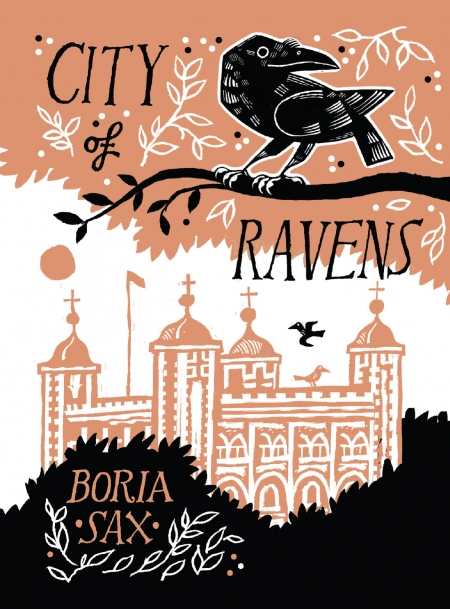City of Ravens
London, the Tower, and Its Famous Birds
At present, a group of ravens resides in the famed Tower of London, protectors—so the story goes—of the Royal Crown. Legend also has it that, should these ravens ever depart from the Tower, London will fall. How these legends arose, and what it is about ravens that people have found so fascinating over many centuries, is the subject of City of Ravens, Boria Sax’s charming, off-kilter work of history and zoology. Sax, who holds a doctorate in Intellectual History and is founder of the organization Nature in Legend and Society, has written similarly quirky studies of man and animal, most notably Animals in the Third Reich: Pets, Scapegoats and the Holocaust.
Sax’s far-ranging research encompasses scholarly studies as well as first-hand accounts of his visits to London and surrounding areas in search of raven folklore. To continue in the ornithological vein, one might say he adopts a magpie approach to his subject, so that it’s not uncommon for him to pause in the course of his narrative to note that “over 60 places in Britain and Ireland contain the word ‘raven’: Ravenhill, Ravendale, Raven’s Green, Ravencraig, Ravensmoore and so on.”
From agriculture to urban settings, the raven conjures up powerful associations and imagery, perhaps at its most macabre as part of the mythology surrounding the numerous beheadings that took place in the Tower over the years. “People thought it entirely normal that ravens should be congregating around an executioner’s block. More alert visitors may have smiled a bit, accepting the ravens as one more bit of showmanship.” City of Ravens touches on nineteenth- and twentieth-century literature as well, ranging from Charles Dickens to Susanna Clark’s Jonathan Strange and Mr. Norrell. Dickens, Sax says, “established a fashion for ravens as pets,” suggesting that the great author wrote Barnaby Rudge partly as solace for the death of his beloved pet, which “may have died from swallowing pieces of broken glass.”
Much of the charm of City of Ravens lies in the author’s encyclopedic knowledge of the species, as well as the free-wheeling style by which he relates his findings. His enthusiasm for such a quirky subject is infectious, and readers less concerned with an orderly delivery of facts (and more with a well-researched, if idiosyncratic, look at ravens throughout British history) will benefit most from reading this book.
Reviewed by
Lee Polevoi
Disclosure: This article is not an endorsement, but a review. The publisher of this book provided free copies of the book to have their book reviewed by a professional reviewer. No fee was paid by the publisher for this review. Foreword Reviews only recommends books that we love. Foreword Magazine, Inc. is disclosing this in accordance with the Federal Trade Commission’s 16 CFR, Part 255.

